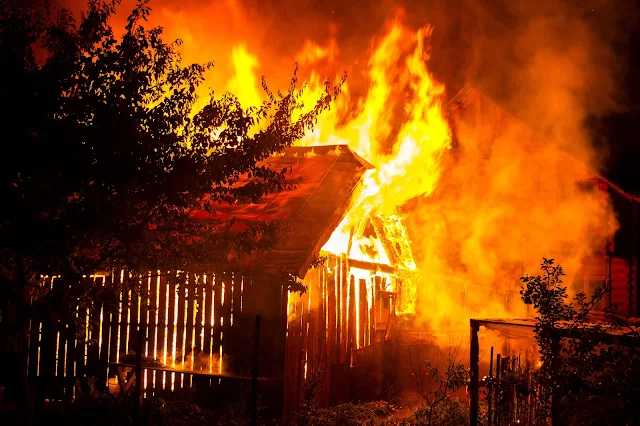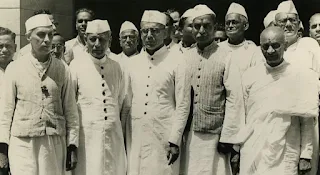
It has been a quarter of a century since the Kashmiri
Pandits were uprooted from their home and hearth and cast about as refugees in
their own homeland. Another anniversary of their exile passed us by in January
this year. India’s left-liberal intelligentsia never tire of warning us against
the dangers of majoritarianism. Strangely the Kashmiri Pandits were victims of
majoritarianism and fundamentalism.
The tragedy and
tribulations that befell this unfortunate community for the last twenty five
years include some of the most heart-rending stories. Theirs is a story of
humanitarian disaster of unprecedented magnitude since the Holocaust, but
strangely, had gone unnoticed by the rest of the world and more importantly by
their own countrymen here in India. As K. P. S. Gill, former police chief of
Punjab put it,
“[...] one of the reasons for the apathy [of the rest of the
world] could be the non-violent nature of the community itself.”
They have stoically
suffered their fate without even a single retaliatory act of violence. Writing
in the ‘South Asia Terrorism Portal’ (SATP) K. P. S. Gill said,
“[…] pogroms
of a far lesser magnitude in other parts of the world have attracted
international attention, censure and action in support of the victim
communities, but this is an insidious campaign that has passed virtually
unnoticed, and on which the world remains silent.”[1]
Our intellectuals
and media crib and caw about the Israeli settlements in Gaza and West Bank, and
the injustices done to Palestinians but not a whisper from them about the fate of
the exiled Kashmiri Pandits. No group of prominent public figures petitioned on
their behalf; no celebrity authors cried in their defence. Could one ask, ‘How
many awards were returned?’ Jug Suraiya gives us an insight into how the
‘secular’ media treated the tragedy in Kashmir:
“By then Kashmir edits had become an exercise in
somnography, or sleep-writing. They were written—or gave the appearance of
being written—in a state of deep slumber, or even a coma. And they were read—if
ever at all—by readers who were in an equally comatose state as a consequence
of reading them. [...] In short, a Kashmir edit, any Kashmir edit, never said
anything new. In fact, it never really said anything at all, really.”
What if
half-a-million Kashmiri Hindus have had to abandon their home and hearth to
become refugees in their homeland? What if they have had to undergo untold
miseries in the refugee camps? What if thousands of security personnel have had
to lay down their lives in the defence of the motherland? For his ‘exercises in
somnography’, Jug Suraiya was confirmed as Op-Ed page editor of The Times of
India![2]
They were once the elite of Kashmiri society. The
community produced artistes and artisans, poets and musicians, doctors and
lawyers of amazing wisdom. At the turn of the century there were about a
million Kashmiri Hindus in the state of Jammu & Kashmir. At the time of
independence the proportion of Hindus in the Kashmir Valley was 15% of the
population. By 1991 it came down to less than 1%. According to a press release
of the Kashmir ‘Pandit Sangharsh Samiti’ on April 7, 2010 99.14% Kashmiri
Pandits were forced to migrate out of Kashmir.
The word ‘genocide’
has been worn out in popular usage during the last decade. It has been so
freely bandied about in public discourse that it lost its original meaning. If
ever there was a context for it to be justifiably applied, it was in the case
of Kashmiri Pandits. ‘Genocide’ means, ‘the systematic
and widespread extermination or attempted extermination of an entire national,
racial, religious, or ethnic group’. This is what happened to the ethnic
identity called the Kashmiri Pandits.
The United Nations Convention on the Prevention and
Punishment of Genocide (of December 9, 1948) defined genocide as: “Genocide
means any of the following acts committed with intent to destroy, in whole or
in part, a national, ethnical, racial or religious group, as such: (a) killing
members of the group; (b) causing serious bodily or mental harm to members of
the group; (c) deliberately inflicting on the group conditions of life
calculated to bring about its physical destruction in whole or in part; (d)
imposing measures intended to prevent births within the group; (e) forcibly
transferring children of the group to another group.”
‘The International Military Tribunal’ which investigated
Nazi war crimes in 1945 defined crimes committed on a mass scale in Article 6
of its Charter.
Art. 6a. CRIMES AGAINST PEACE are defined as ‘planning,
preparation, initiation, or waging wars of aggression, or a war in violation of
international treaties, agreements, or assurances, or participation in a common
plan or conspiracy for the accomplishment of any of the foregoing.’
Art. 6b. WAR CRIMES are defined as ‘violations of the
laws or customs of war. Such violations shall include, but not be limited to,
murder, the ill-treatment or deportation of civilian residents of an occupied
territory to slave labor camps or for any purpose, the murder or ill-treatment
of prisoners of war or persons on the seas, the killing of hostages, the
plunder of public or private property, the wanton destruction of cities, towns
or villages, and any devastation not justified by military necessity’.
Art. 6c. CRIMES AGAINST HUMANITY are defined as ‘murder,
extermination, enslavement, deportation, and other inhumane acts committed
against any civilian population before or during the war; or persecutions on
political, racial, or religious grounds in execution of or in connection with
any crime within the jurisdiction of the Tribunal, whether or not in violation
of the domestic law of the country where perpetrated’.
The rise of Islamic
militancy was the trigger for ethnic cleansing in Jammu and Kashmir. In a way
the state too contributed to it by first releasing hard-core terrorists in the
second half of 1989 and then abdicating its responsibility in preserving public
order. Thus the state was guilty of genocide by omission if not commission. The
terrorists, who were trained in Pakistan in the handling of weapons of
destruction, were released against the advice of a three-member Advisory Committee
headed by the Chief Justice of the Jammu and Kashmir High Court. The swap of
five hard core terrorists, Hamid Sheikh, Sher Khan, Javed Ahmed Zargar, Mohd.
Kalwal and Mohd Altaf Bhat on December 13, 1989 for the release of Rubaiya
Sayed the daughter of the Union Home Minister Mufti Mohamed Sayed led to a
demoralisation of the law and order machinery and the collapse of the state
administration.
In the 1989-90
period an estimated 300,000 Pandits were forced to flee the Kashmir valley. A
total number of 700,000 Kashmiri Hindus were estimated to be displaced between
1947 and 1990. Of these 300,000 have been living in refugee camps outside Jammu
and another 100,000 in Delhi. According to the ‘Panun Kashmir Movement’ (PKM)
an organisation of the exiled Pandits some 25,000 standalone houses belonging
to the Pandits were burnt during the period. If the houses were situated in
crowded localities where it was not possible to burn them they were simply
occupied by others. Their properties were purchased by members of the majority
community at throw away prices. Even their cremation grounds were not spared
but encroached upon. PKM says the process of ethnic cleansing began in 1967 but
gained momentum after 1989 when Pakistan sponsored militants arrived on the
scene.
The
torture inflicted on the Pandits took several forms: strangulation by using
steel wires; lynching; branding with red hot irons; draining of blood; slicing;
gouging of eyes before assassination; breaking of limbs; slaughter; hanging;
dragging to death; dismemberment of body; drowning alive; burning alive;
impaling.[3]
The destruction of
Hindu temples which has been going on since the fourteenth century has gained
momentum in the nineteen eighties. Between 1986 and 1992 (prior to December) 79
Hindu temples were destroyed. In the immediate aftermath of the Rama
Janmabhumi-Babri Masjid demolition in December 1992, 81 more temples were
destroyed.
The 1989 exodus
followed the brutal killing of Tika Lal Taploo a noted lawyer and national
executive member of the BJP and Justice N. K. Ganju of the Jammu & Kashmir
High Court. In another incident Pandit Sarwanand Premi, an 80-year old poet and
his son were kidnapped, tortured and killed. A Kashmiri Pandit nurse working in
the Soura Medical College Hospital was gang-raped and beaten to death. In the
days that followed warnings were sounded to the community over public address
systems, either to flee or face death. The Farooq Abdullah government abdicated
its responsibility and all but handed over the administration to the militants.
Government offices ceased functioning, taxes were neither paid nor collected
and the militants began running a parallel judicial system.
Life in the refugee camps has been physically and
psychologically shattering for the unfortunate Pandits and may be described as
sub-human. An entire family of 7-8 people had to share a small room. There are
instances when three generations of a family were put up in one room, the room
being partitioned by bed sheets. The combined effects of the undercurrent of
terror, forced migration and sub-human living conditions made the community
prone to a host of new diseases and syndromes. These include heat trauma, heart
ailments, amoebic dysentery, tuberculosis, allergies, diabetes and sexual and
reproductive disorders. Menopausal age in women dropped from 50-55 to 40-45 to
35-40. There was a steep drop in birth rates while mortality rates climbed. In
one of the camps surveyed, which had 350 families, there were only 5 births
between 1990 and 1995 as against 200 deaths. This is not all. The community
became increasingly prone to a series of mental disorders ranging from depression,
insomnia, anorexia, anxiety states, delusions, panic disorders, manias, phobias
and schizophrenia. Women were the most affected.
Even more tragic
than the suffering is the treatment meted out to the Pandits by the rest of the
Indian polity and the central government. They became orphans of history,
abandoned by their compatriots and condemned to live a life of deprivation and
suffering. Governments have come gone, both at the state and the centre but nothing
changed, not even during the six year BJP rule.
In 2004, Frank
Pallone, a US Democratic Congressman expressed his surprise and shock that the
new Indian administration did not mention the Pandits in its Kashmir policy. In
his letter of August 23 to Prime Minister Manmohan Singh, Pallone urged him to
“include the Pandits in any negotiations with Kashmiri constituents and in
developing the future course of action in Jammu and Kashmir.” Manmohan Singh’s
government sent a team of interlocutors to Kashmir last year but the Pandits
did not seem to be on the radar of either the team or the government.
The Jews have a
custom of greeting each other with ‘Next year in Jerusalem!’ at the end of Yom
Kippur and Passover feasts. They kept up the tradition for nearly two thousand
years—till the formation of Israel in 1948—even though many of the exiled Jews
never set their eyes on the city nor had a hope in the world of ever doing so.
Will the Pandits of Kashmir have to wait for 2000 years for a semblance of
justice to be meted out to them?
[1] Gill, K. P. S. 2004. “The Kashmiri Pandits: An Ethnic
Cleansing the World Forgot.” Accessible from http://goo.gl/jyql6
[2] Suraiya, Jug. (2011) JS & The Times of My
Life—A Worm’s-eye View of Indian Journalism (2011). Tranquebar Press.
Chennai. pp 307-9
[3] “Kashmir Documentation: Pandits in Exile” Panun
Kashmir Movement. Jammu. p.18
...............................................
Excerpted from Twisting Facts To Suit
Theories & Other Selections From Voxindica (2016). Authors Press.
New Delhi. pp 386-392. An earlier version of the article was published in VOXINDICA on February, 3, 2012



